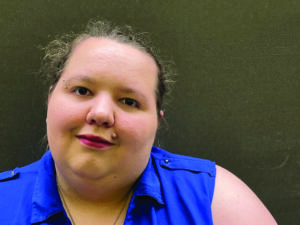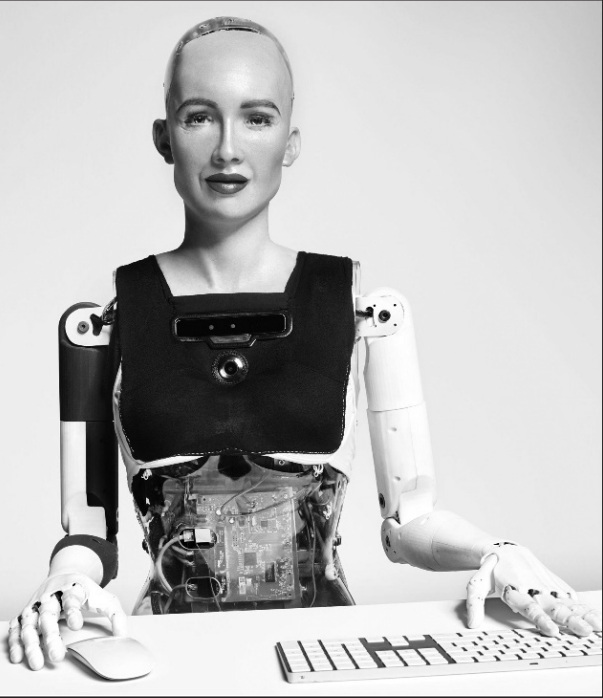
The Scene staff
Artificial intelligence, or AI, has ignited widespread debate in recent years due to concerns about content theft, plagiarism, job displacement and potential for misuse.
Despite these concerns, AI is growing. So much so that colleges, including our very own Forest Park, have found ways to identify potential users and enforce strict rules to regulate AI use among students. But this raises questions about fairness and the need for a more informed approach.
One key concern revolves around the idea of penalizing students for using tools such as Grammarly or Spellcheck, which have been readily available for many years. The restriction seems counterproductive, especially when the tools were created to improve writing quality and accuracy.
Educators argue that relying on AI for academic tasks is unfair and undermines critical thinking and problem solving. Some support bans on AI-based methods “to preserve academic integrity and prevent potential misuse,” according to one of my professors.
These concerns are valid, but it’s important to remember that similar concerns have gone hand-in-hand with every technological advancement in human history.
Take, for example, the historical fear surrounding techniques such as rotoscoping, which animators use to trace live-action footage frame-by-frame.
Another example was the introduction of drawing tablets and computer-generated imagery (CGI). Animators, such as the renowned Aaron Blaise, considered them shortcuts that would eventually lead to job losses. Over time, the animators came to see them as aids rather than threats.
In recent years, artificial intelligence has grabbed the spotlight in the art world due to AI-generated artwork and videos. But if done right, AI-driven animation can be made without stealing from others.
This is done by feeding an algorithm a certain style of work from a team’s own artist so that it doesn’t get confused or drastically change the scene. Then animators send images and footage through an AI-generated filter so the computer can create an animation based on the provided style.
After that, the animators clean up any possible residual flickers caused by the filter removing any unnecessary frames along the way. Then they render the animation to create a final product.
The amount of work involved in creating AI-driven animation depends on the workflow and the time and effort needed to train the machine. I believe that use of this tool should not be discouraged, as it can be valuable for animators.
So many controversies still surround AI, but it’s worth noting that the technology isn’t entirely new. The term “artificial intelligence” was first coined in the 1950s by Alan Turing, a British mathematician and logician who lived from 1912 to 1954. Shortly after that, AI was first used successfully.
Through the decades, AI has made tremendous strides, and it continues to evolve. It’s become a part of our daily lives in a variety of ways.
Many people are familiar with Clippy, the friendly animated paperclip assistant that was created in 1996 and became something of a mascot for Microsoft Word.

Clippy’s early role
Although many users viewed Clippy as annoying, it was still an AI tool whose sole purpose was to assist with writing tasks.
Microsoft discontinued the mascot in 2007 and now only uses Spellcheck.
Today, Apple’s Siri, Amazon’s Alexa and other voice-activated assistants are integral to our smart devices, providing answers, information and even entertainment through AI-driven speech recognition and natural language processing.
In the realm of humanoid robotics, Sophia the robot, developed by Hanson Robotics, gained fame for her human-like appearance and AI-driven abilities. Sophia can engage in conversation, recognize faces and express a range of emotions.
Considering the ongoing advancements in technology and AI, it’s understandable why educational institutions would want to implement strict regulations. But there comes a time when detectors that penalize students for employing Grammarly or Spellcheck seem unjust.
By fostering a supportive environment that combines traditional learning with the benefits of AI-powered tools, schools can better prepare students for challenges of the digital age, promoting both academic integrity and technological literacy.
It’s obvious that every tool or technology has both advantages and disadvantages. We learned this in grade school, when teachers denied student use of calculators on the concern that they would become over-reliant on them and less proficient in basic arithmetic.
The same thing is now said about AI and spellcheck. Some worry that students will forgo their own judgment in favor of quick and easy solutions.
However, I believe that these tools can be effective for educational purposes if used in moderation and in conjunction with other teaching methods.
AI can provide personalized tutoring and feedback, while spellcheck can help students improve their writing skills. Of course, these tools shouldn’t be substituted for human interaction and critical thinking. It’s all about balance.
Calculators differ from AI and spellcheck, but my point remains. They share commonalities in how they integrate technology into the educational system. Both have advantages and challenges. Calculators help with mathematical problem-solving, but they require a balanced approach to ensure students develop fundamental math skills.
Spellcheck enhances writing and communication but should be used responsibly to promote originality and maintain language skills. It’s high time we learn to be more accepting of modernity and realize that with more restrictions come more ways to bend and break the rules.
Finding workarounds
Students with programming skills already have found ways to bypass regulations, creating more and more algorithms that generate content mimicking human writing patterns that are less polished to “dumb down” or “humanize” their work.
Rather than spending so much time, effort, and money on ways to reject AI, we should be working on using AI as a tool.
In the end, the effective integration of technology into education requires careful consideration of its role and impact on student learning outcomes. Regardless of our personal stances, it’s clear that the ethical dimensions of AI use demand consideration.
It’s true that issues remain, such as people exploiting AI and claiming the generated work as their own. But it’s important to remember that not everyone who uses AI is involved in nefarious activities and I, for one, believe that it’s possible for students to use AI in a fair and beneficial way.
